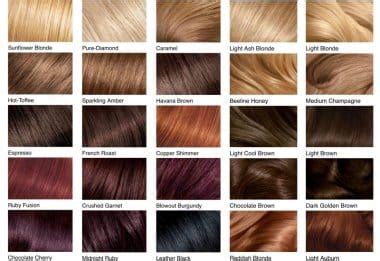Styling your hair with the perfect color can dramatically enhance your appearance, boost your confidence, and make you feel like a million bucks. With countless hair color options available, finding the best one for you can be an overwhelming task.

Understanding Hair Color Basics
Hair color is determined by two main pigments: eumelanin and pheomelanin. Eumelanin gives hair its brown or black color, while pheomelanin is responsible for red or yellow tones. The combination and concentration of these pigments in your hair shaft determine your natural hair color.
Types of Hair Color
There are three main types of hair color:
- Natural Hair Color: This refers to the color your hair has when you’re born. It is determined by your genetics and cannot be changed permanently.
- Semi-Permanent Hair Color: This type of color lasts for several washes, usually between 6 and 12. It does not contain ammonia or peroxide, so it is less damaging to your hair than permanent color.
- Permanent Hair Color: This type of color contains ammonia or peroxide and penetrates the hair shaft, altering the color permanently. It is the most long-lasting hair color option.
Choosing the Best Hair Color for You
The best hair color for you depends on a variety of factors, including your skin tone, eye color, and personal style.
Skin Tone:
- Warm skin tones: Golden, honey, and copper shades tend to complement warm skin tones. Avoid ashy or cool colors, as they can make your skin look sallow.
- Cool skin tones: Ash, blue, and violet shades work well with cool skin tones. Avoid brassy or warm colors, as they can make your skin look red or blotchy.
- Neutral skin tones: You’re lucky! Neutral skin tones can wear almost any hair color. Experiment until you find the shade that suits you best.
Eye Color:
- Brown eyes: Almost any hair color looks great with brown eyes. However, warm shades like golden brown, chocolate, and auburn can enhance their depth.
- Blue eyes: Cool shades like ash blonde, platinum, and silver can brighten and enhance blue eyes. Warm shades can make blue eyes appear muddy.
- Green eyes: Red-based shades like auburn, copper, and strawberry blonde can bring out the green in your eyes. Avoid black or dark brown colors, as they can make green eyes look dull.
Personal Style:
- Classic: Stick to natural or subtle shades that won’t clash with your wardrobe. Think warm browns, cool blondes, and lowlights.
- Edgy: Experiment with bold colors like bright red, blue, or purple. You can also try ombré or balayage techniques for a more gradual transition.
- Trendy: Stay up-to-date with the latest hair color trends. Consider pastel shades, metallic hues, or iridescent colors.
Tips and Tricks
- Always do a strand test before coloring your entire head. This will help you determine the right color and avoid any unwanted surprises.
- Use a color-safe shampoo and conditioner to protect your hair color from fading.
- Get regular trims to get rid of split ends and keep your hair looking healthy.
- If you’re not sure what color to choose, consult with a professional hair stylist. They can help you find the perfect shade for your skin tone, eye color, and personal style.
Pros and Cons of Hair Coloring
| Pros | Cons |
|---|---|
| Enhances your appearance | Can be damaging to hair |
| Boosts confidence | Requires regular maintenance |
| Can cover up gray hair | Can lead to allergic reactions |
| Allows you to experiment with different looks | Can be expensive |
Creative Hair Color Ideas
Once you’ve found your perfect hair color, don’t be afraid to experiment with different styles and techniques. Consider:
- Ombré: A gradual transition from one color to another, typically from dark to light.
- Balayage: A freehand painting technique that creates soft, natural-looking highlights.
- Dip-dye: Dyeing the ends of your hair in a different color, typically a brighter or more vibrant shade.
- Root smudge: Blending your roots with your hair color to create a subtle, grown-out effect.
Conclusion
Finding the best hair color for you is a personal journey that requires careful consideration of your individual features and style. By understanding hair color basics, choosing the right shade for your skin tone and eye color, and experimenting with different styles and techniques, you can achieve a look that will turn heads and make you feel fabulous.
